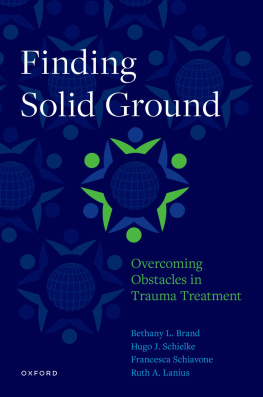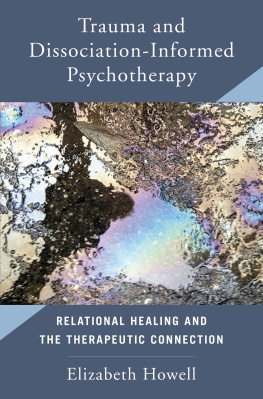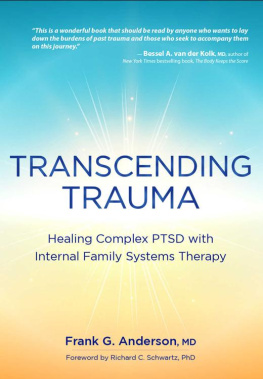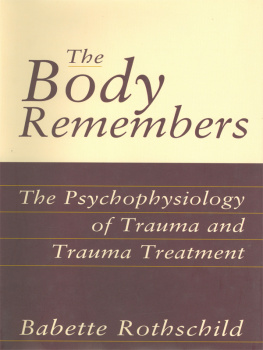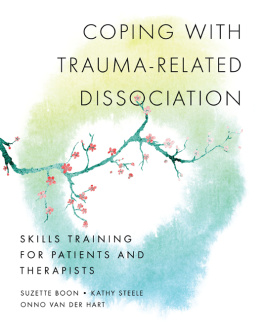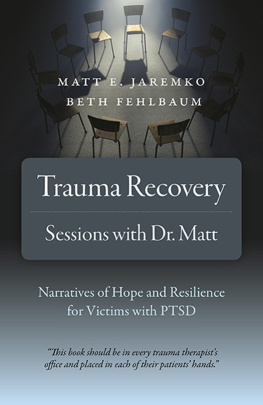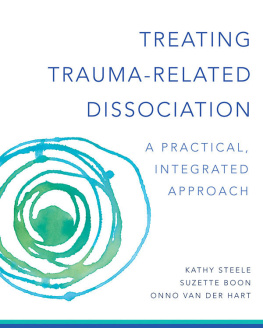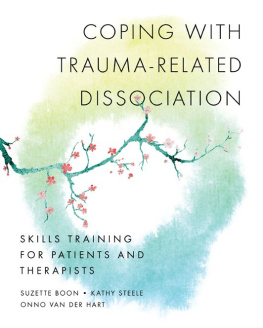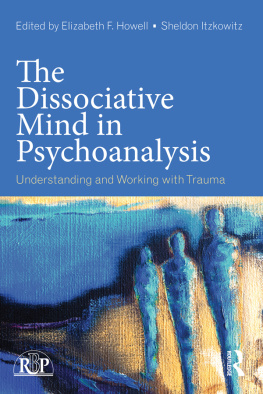Advance Praise for Finding Solid Ground
Finding Solid Ground is easily one of the most helpful books available on the treatment of clinical dissociation. Based on an extended clinical research study, this guide is highly recommended for those who seek concrete, evidence-based guidance in this area. Equally recommended is the associated workbook, which provides detailed and compassionate information and exercises for clients struggling with dissociative challenges.
John Briere, PhD, Professor Emeritus of Psychiatry, Keck School of Medicine, University of Southern California, author, Treating Risky and Compulsive Behavior in Trauma Survivors. NY: Guilford (2019)
Finding Solid Ground is an enormous contribution to the field of trauma: the first book on trauma and dissociation written by authors who are both scholars and clinicians. They build a solid ground of research evidence to support an understanding of dissociation combined with practical applications that can be easily integrated into psychotherapy or serve as a stand-alone treatment. Well done!
Janina Fisher, PhD, author of Healing the Fragmented Selves of Trauma Survivors, Transforming the Living Legacy of Trauma, and The Living Legacy Flip Chart
Finding Solid Ground provides invaluable resources on the treatment of dissociative trauma-related disorders. The authors are educators par excellence who have used their expertise as researchers and clinicians to produce a highly readable overview of dissociation along with treatment guidelines and exercises. Their innovative TOP DD studies offer empirical support for their approach. A major contribution!
Christine A. Courtois, PhD, ABPP, Licensed Psychologist, Consultant/Trainer, Author, Co-Editor, The Treatment of Complex Traumatic Stress Disorders (2020)

Oxford University Press is a department of the University of Oxford. It furthers the Universitys objective of excellence in research, scholarship, and education by publishing worldwide. Oxford is a registered trade mark of Oxford University Press in the UK and certain other countries.
Published in the United States of America by Oxford University Press
198 Madison Avenue, New York, NY 10016, United States of America.
Oxford University Press 2022
All rights reserved. No part of this publication may be reproduced, stored in a retrieval system, or transmitted, in any form or by any means, without the prior permission in writing of Oxford University Press, or as expressly permitted by law, by license, or under terms agreed with the appropriate reproduction rights organization. Inquiries concerning reproduction outside the scope of the above should be sent to the Rights Department, Oxford University Press, at the address above.
You must not circulate this work in any other form and you must impose this same condition on any acquirer.
Library of Congress Cataloging-in-Publication Data
Names: Brand, Bethany L., author. | Schielke, Hugo J., author. |
Schiavone, Francesca, author. | Lanius Ruth A., author.
Title: Finding solid ground : overcoming obstacles in trauma treatment /
Bethany L. Brand, Hugo J. Schielke, Francesca Schiavone, Ruth A. Lanius.
Description: New York : Oxford University Press, 2022. |
Includes bibliographical references and index.
Identifiers: LCCN 2022010860 (print) | LCCN 2022010861 (ebook) |
ISBN 9780190636081 (paperback) | ISBN 9780190670160 (epub) |
ISBN 9780190636104
Subjects: LCSH: Post-traumatic stress disorderTreatment. |
Dissociative disordersTreatment.
Classification: LCC RC552.P67 B728 2022 (print) | LCC RC552.P67 (ebook) |
DDC 616.85/21dc23/eng/20220511
LC record available at https://lccn.loc.gov/2022010860
LC ebook record available at https://lccn.loc.gov/2022010861
DOI: 10.1093/med-psych/9780190636081.001.0001
Contents
Frank Putnam
The year 2020 marks the 40th anniversary of the third edition of the Diagnostic and Statistical Manual of Mental Disorders, commonly referred to as DSM-III (1980). Unveiled to cries of acclaim and alarm from the establishment, the DSM-IIIs atheoretical, symptom-driven, multi-axial, descriptive approach to psychiatric diagnosis was a significant departure from earlier nosology based on outdated theories of personality reaction formation. The DSM-IIIs delineation of specific symptom constellations, irrespective of theory or etiology, helped to refocus clinicians on the clients in front of them.
While acute psychological effects of combat were recognized under labels such as WWI shell shock and WWII combat fatigue/neurosis, there was a need for psychiatric diagnoses that encompassed delayed and/or chronic emotional, cognitive, somatic, and behavioral responses to past trauma. In the United States this was, in large measure, a response to a growing awareness of the serious mental health problems in Vietnam War veterans that often emerged years after their return from combat. To address this deficit, the DSM-III introduced the diagnosis of posttraumatic stress disorder (PTSD) as well as detailing a more accurate clinical profile of multiple personality disorder, subsequently renamed dissociative identity disorder (DID) in DSM-IV (1994). The DSM-IIIs recognition of delayed-onset posttraumatic disorders initiated a new field of research and clinical practicealthough it would struggle to gain legitimacy and resources for years to come.
Forty years later, however, the existence of posttraumatic disorders is rarely questioned, although a lively debate continues about subtypes. As additional, noncombat forms of trauma were studied (e.g., rape, child abuse, first responders, and natural disasters), it became clear that there is a range of posttraumatic responses that are complexly influenced by variables such as age, gender, type(s) and duration of trauma, and relationship to perpetrator(s), as well as factors such as degree of social support, synergistic interactions among different types of trauma, and individual differences. One of the posttraumatic psychological processes that critically influences clinical presentation and treatment response is the clients degree of dissociation. The recent addition of the diagnosis, PTSDdissociative subtype in DSM-5, for example, reflects a growing appreciation of the importance of dissociation in influencing clinical features of trauma-related disorders (TRDs).
Despite an initial lack of professional awareness and widespread skepticism about the existence of dissociative disorders, much has been learned over the past four decades that demystifies these conditions. Dissociation is now measured with the same psychometric precision as depression and anxiety. Epidemiological studies in general population and clinical samples find that the dissociative disorders are common psychiatric conditions (see of this book). High levels of dissociation are correlated with refractoriness to standard treatments for a variety of psychiatric conditions, including PTSD, eating disorders, and borderline personality disorder.
Pathological dissociation is strongly linked to a history of severe trauma. This etiological relationship of severe trauma and subsequently increased levels of dissociation holds for a wide range of types of trauma across culture and time. Severe, repetitive, often early-life traumas such as childhood sexual abuse are recognized as a necessarybut not sufficientcause of dissociative disorders.

